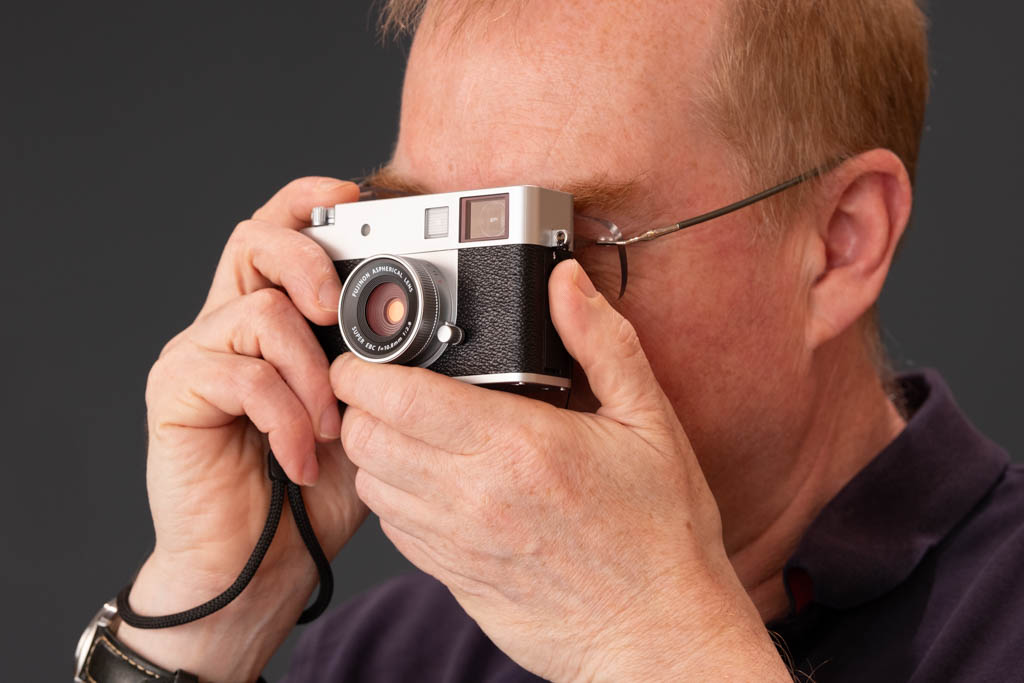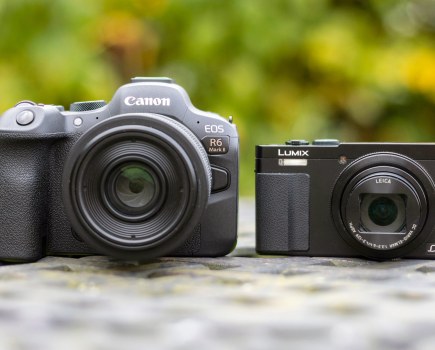I’ve been stewing about this for more than a week, and I now throw the question open to the audience. What on EARTH is Fujifilm doing with the X half, and how can it possibly justify charging $849 (£699) for this camera?
The X half, if you haven’t seen it, is a bold and unusual new release, comprising several things at once. It’s partly a miniature version of Fujifilm’s phenomenally popular X100 series of digital compacts, sporting a fixed 32mm equivalent lens and a retro-styled body.
However, it’s also what you could describe as a film photography tribute act, with numerous features designed to evoke the feeling of shooting film. Not only does it have Fujifilm’s popular Film Simulation modes, but it has an entire ‘film camera mode’, in which you have to use a mechanical advance lever before you can take the next shot, and playback is locked until you finish the ‘roll’ and send it to your phone. It produces images in 4:3 format, in the style of analogue half-frame cameras that double the shots from a roll of film by only exposing half a frame at a time.

Sure, it’s a bit kitschy, but it’s fun, it’s unique, and it’s a cool retro throwback – all things Fujifilm is great at. But then you get to the price. That price, for a dinky compact camera with a one-inch sensor, that doesn’t shoot raw. It’s just completely impossible to get past, because all the arguments justifying the X half’s existence completely fall apart when you remember what they’re asking.
‘It’s a fun camera,’ people say, ‘it’s not for photographers, it’s for people who like knockabout fun.’ Then why does it cost so much?! Who, in these times of spiralling costs and ever-depressed pay, has $849 to spend on a novelty fun camera? Is it the equivalent of a Lenny Kravitz Leica, a prettied-up vanity piece to be hawked to rich suckers? Is that what we’re reduced to?
It makes even less sense when you look at what the X half is based on. A half-frame film camera like the Kodak Ektar H35N costs about $57. You can get beautiful Kodak Gold for around $7 per roll at B&H. Processing prices vary, but for simplicity, let’s put the total cost of buying, developing and scanning a roll of film at about $25. At those numbers, you could run more than 30 rolls of film (more than 1,000 frames) through your half-frame film camera before spending the equivalent cost of an X half.

I have shot many thousands of frames of film, and honestly, the excitement of getting your scans back does not wear off. Do we really think the novelty factor of downloading your X half images from the X half app, and of winding the fake advance lever, will be equally undiminished by the time you hit the thousandth frame?
I get that complaining about price is tedious. I used to co-run the socials for a large UK photo retailer, and whenever there was a new release, we’d get the same people in our comments moaning about the prices. At the time, I found them ridiculous (‘So what if the Sony A7S III costs $3,499? It’s a professional tool, and you were never going to buy it anyway, Gerald.’) but in this case, I think the moaners have a point.
I don’t say these things to be a hater. I love Fujifilm. All of my digital photography gear is Fujifilm, and I expect it always will be. But come on. The Sony ZV-1F (which, I remind you, also has a 1-inch sensor!) costs $498. The Panasonic Lumix FZ80D costs $477. This is just not good enough, is it?
Related reading
- Today’s high camera prices are making them a luxury for photographers, not a necessity
- Here’s why new cameras are actually cheaper than you think
The views expressed in this column are not necessarily those of Amateur Photographer magazine or Kelsey Media Limited. If you have an opinion you’d like to share on this topic, or any other photography related subject, email: [email protected]







